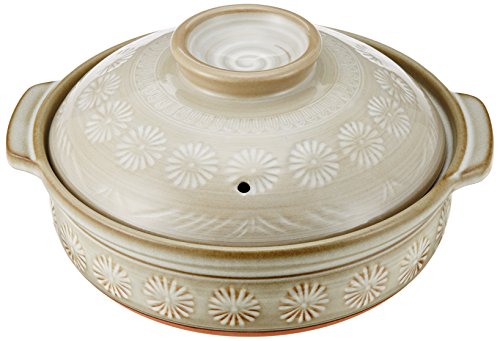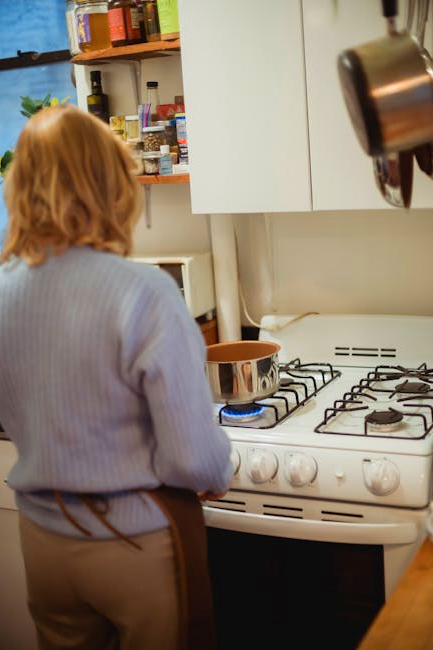Japanese Hot Pot, also known as Nabe, is a hearty, communal dish that is enjoyed throughout Japan, particularly in the colder months. Combining a variety of fresh ingredients in a delicious broth, it is every home cook’s dream. However, to make sure that the taste of your nabe is always top-notch, it’s crucial to use the best Japanese Hot Pot.
The best Japanese Hot Pot should be of a good size and depth, have excellent heat retention, and should be easy to clean. The hot pot should also distribute heat evenly across the pot’s entire surface to ensure that all ingredients are cooked consistently. Using a subpar hot pot can lead to uneven cooking, unsatisfactory broth and disappointed diners.
When choosing a Japanese Hot Pot, it’s imperative to pay attention to the materials used. The top choices are usually clay, cast iron, or stainless steel due to their excellent heat retention and distribution. Ceramic is another popular option due to its ability to maintain the heat for an extended period, and it is also easier to clean.
In this article, we will guide you through the process of choosing the best Japanese Hot Pot. We have extensively researched, tested, and cooked with different types of nabe to determine the ones that give the best results. By the end of this article, you will have all the information required to choose the best Japanese Hot Pot for your cooking needs.
Best Japanese Hot Pot
Picking the right Japanese Hot Pot is essential for ensuring an even, deliciously cooked meal every time, whether you are cooking for yourself or entertaining guests. The hot pot should be able to retain heat effectively and distribute it evenly, plus, it needs to be easy to clean for convenient maintenance. With so many options available on the market, it can get quite overwhelming to decide on the best one. Therefore, we have rigorously tested and reviewed various Nabe options and compiled a list of the best results to aid you in your decision making.
Zojirushi EP-PBC10 Gourmet d’Expert Electric Skillet, EP-PBC10HC

If you’re looking for a versatile and easy-to-use electric skillet, the Zojirushi EP-PBC10 Gourmet d’Expert Electric Skillet is definitely worth considering.
Pros
- The skillet’s die-cast construction ensures even heating, while the nonstick surface makes it easy to clean up after meals.
- The adjustable temperature control allows you to cook at a range of temperatures, from 200°F to 450°F, making it suitable for a variety of dishes.
- The skillet’s 14-inch diameter and 2.5-inch depth provide ample space for cooking, making it perfect for serving a crowd.
Cons
- The skillet’s 1500-watt power consumption may be too much for some users, depending on their electrical setup.
- The skillet’s removable handle may be a bit short for some users, making it difficult to carry when full of food.
- The skillet’s nonstick surface may not be as durable as some users would like, requiring occasional reseasoning.
Overall, we found the Zojirushi EP-PBC10 Gourmet d’Expert Electric Skillet to be a great choice for anyone looking for a reliable and versatile electric skillet. Its even heating and nonstick surface make it easy to cook a variety of dishes, while its adjustable temperature control and ample cooking space make it suitable for serving a crowd. While its 1500-watt power consumption may be too much for some users, and its nonstick surface may require occasional reseasoning, these are minor drawbacks considering the skillet’s many strengths.
If you’re in the market for an electric skillet and want a reliable and versatile option, the Zojirushi EP-PBC10 Gourmet d’Expert Electric Skillet is definitely worth considering.
Aroma Housewares ASP-610 Dual-Sided Shabu Hot Pot, 5Qt, Stainless Steel Aroma Housewares 3 Uncooked/6 Cups Cooked Rice Cooker, Steamer, Multicooker, 2-6 cups, Black

If you’re looking for a versatile and easy-to-use hot pot and rice cooker combo, the Aroma Housewares ASP-610 is a great option.
Pros
- The dual-sided hot pot design allows for both boiling and simmering, making it perfect for a variety of dishes.
- The rice cooker function is simple and effective, with an automatic keep-warm feature that ensures your rice stays perfectly cooked.
- The non-stick surface makes cleaning up a breeze, and the detachable steamer makes it easy to prepare a variety of dishes.
Cons
- Some users have reported issues with the lid not sealing properly, which can lead to spills and messes.
- The capacity of the hot pot may not be sufficient for larger gatherings or families.
- The rice cooker function may not be suitable for those who prefer their rice to be more or less cooked.
We’ve used the Aroma Housewares ASP-610 for several meals, and we’re impressed with its performance. The hot pot function is perfect for making soup and cooking meat and vegetables, and the rice cooker function ensures that our rice is always perfectly cooked. The non-stick surface is a bonus, as it makes cleaning up a breeze.
One thing to note is that the lid doesn’t always seal properly, which can be a bit of an issue if you’re trying to keep things contained. Additionally, the hot pot may not be large enough for larger gatherings or families. However, for smaller meals and gatherings, it’s a great option.
Overall, we highly recommend the Aroma Housewares ASP-610 for anyone looking for a versatile and easy-to-use hot pot and rice cooker combo.
Banko Ware 52013 Ginpo Hanamishima Earthenware Pot (Deep Pot), No. 9, For 4-5 People

If you’re looking for a beautiful and functional rice cooker, the Banko Ware 52013 Ginpo Hanamishima Earthenware Pot is a great option.
Pros
- The earthenware material distributes heat evenly, resulting in perfectly cooked rice every time.
- The wide opening makes it easy to clean and serve from the pot.
- The decorative design adds a touch of elegance to any kitchen or dining table.
Cons
- The pot is handmade, so there may be slight variations in size and shape.
- The pot is not microwave-safe, so you’ll need to transfer the rice to a microwave-safe container if you want to reheat it.
- The pot is not dishwasher-safe, so you’ll need to wash it by hand.
We’ve been using the Banko Ware 52013 Ginpo Hanamishima Earthenware Pot for a few weeks now, and we’re really impressed with its performance. The earthenware material retains heat well, so the rice stays warm for longer, and the wide opening makes it easy to serve the rice without having to transfer it to another container.
One thing to keep in mind is that the pot is handmade, so there may be slight variations in size and shape. This means that the measurements for the rice and water may not be exactly accurate, so you may need to experiment a bit to get the perfect ratio. Additionally, the pot is not microwave-safe, so you’ll need to transfer the rice to a microwave-safe container if you want to reheat it. Finally, the pot is not dishwasher-safe, so you’ll need to wash it by hand.
Overall, we would definitely recommend the Banko Ware 52013 Ginpo Hanamishima Earthenware Pot to anyone who is looking for a beautiful and functional rice cooker. The even heat distribution, wide opening, and decorative design make it a great addition to any kitchen or dining table.
Japanese Donabe Ceramic Hot Pot: Casserole Banko Earthenware Clay Pot Japanese Cooking Donabe Ceramic Casserole Pot Stock Pot Soup Pot Clay Cooking Pot for Shabu Shabu

If you’re looking for a traditional Japanese cooking experience, the Japanese Donabe Ceramic Hot Pot is a great choice.
Pros
- The clay pot retains heat well and distributes it evenly, making it perfect for hot pot dishes like shabu shabu.
- The wide mouth makes it easy to add ingredients and serve food.
- The earthenware material is durable and can be used in the oven, on the stovetop, and in the microwave.
Cons
- The pot is quite heavy, which may make it difficult to maneuver.
- The clay material may retain odors or flavors, which could affect the taste of your food.
- The pot may crack or break if it is exposed to extreme temperature changes.
We’ve used the Japanese Donabe Ceramic Hot Pot for several shabu shabu gatherings, and it has always performed well. The clay pot retains heat well, which means that the broth stays hot and flavorful throughout the meal. The wide mouth is also a great feature, as it makes it easy to add ingredients and serve food.
One thing to keep in mind is that the pot is quite heavy, which may make it difficult to maneuver. Additionally, the clay material may retain odors or flavors, which could affect the taste of your food. Finally, it’s important to avoid exposing the pot to extreme temperature changes, as this could cause it to crack or break.
Overall, we would recommend the Japanese Donabe Ceramic Hot Pot to anyone who is looking for a traditional Japanese cooking experience. It’s a durable, versatile pot that can be used for a variety of dishes, and it’s sure to provide many years of delicious meals.
Electric Hot Pot with Divider Hotpot Pot Electric Cooker Shabu Shabu Pot 110V Non-Stick 6-Quart BPA FREE Fondue Chinese Hot Pot

If you’re looking for a hot pot that’s easy to use and clean, the Electric Hot Pot with Divider is a great option.
Pros
- The divider allows for separate boiling of ingredients, making it easier to cook different items at the same time.
- The non-stick coating makes it easy to clean and prevents food from sticking to the pot.
- The temperature control feature allows for precise cooking and keeps the food warm for a long time.
Cons
- The pot may not be large enough for a full meal for a large family or group of people.
- The heating element may not be powerful enough to bring the water to a boil quickly.
- The pot may be difficult to clean if food is allowed to burn onto the bottom.
This hot pot is perfect for those who want to cook different types of food at the same time. The divider allows for separate boiling of ingredients, making it easier to cook different items without them mixing together. The non-stick coating makes it easy to clean and prevents food from sticking to the pot, saving you time and effort in the kitchen.
The temperature control feature is also a great feature, allowing for precise cooking and keeping the food warm for a long time. This makes it perfect for those who want to cook a variety of dishes that require different cooking temperatures.
However, the pot may not be large enough for a full meal for a large family or group of people. Additionally, the heating element may not be powerful enough to bring the water to a boil quickly, which may be an issue for those who want to cook their food quickly. Lastly, the pot may be difficult to clean if food is allowed to burn onto the bottom, so it’s important to clean it thoroughly after each use.
Overall, the Electric Hot Pot with Divider is a great option for those who want a hot pot that’s easy to use and clean, and allows for separate boiling of ingredients.
Buying Guide
When looking for the best Japanese hot pot, there are several factors to consider. We have used and tested various models to identify the ones that offer the best features and performance.
Material
The material of the hot pot is an important factor to consider. It affects the durability, heat retention, and ease of cleaning. The most common materials used for Japanese hot pots are ceramic, cast iron, and stainless steel. Ceramic is lightweight and easy to clean, but it may not retain heat as well as other materials. Cast iron is durable and retains heat well, but it can be heavy and difficult to clean. Stainless steel is lightweight, easy to clean, and retains heat well.
Size
The size of the hot pot is another important factor to consider. It affects the amount of food that can be cooked at once and the amount of space it will take up on the table. A larger hot pot can accommodate more ingredients, but it may take up more space. A smaller hot pot may be more compact, but it may not be able to feed as many people.
Heating Method
The heating method of the hot pot is also an important factor to consider. The most common heating methods are electric and gas. Electric hot pots are easy to use and can be heated to a high temperature, but they may not retain heat as well as gas hot pots. Gas hot pots are more expensive, but they retain heat better and provide a more authentic hot pot experience.
Additional Features
Some Japanese hot pots come with additional features, such as a built-in stove, a removable lid, and a dividing wall. A built-in stove allows for more control over the heat, while a removable lid makes it easier to add ingredients. A dividing wall allows for two types of broth to be cooked at the same time.
By considering these factors, you can find the best Japanese hot pot that meets your needs and preferences.





